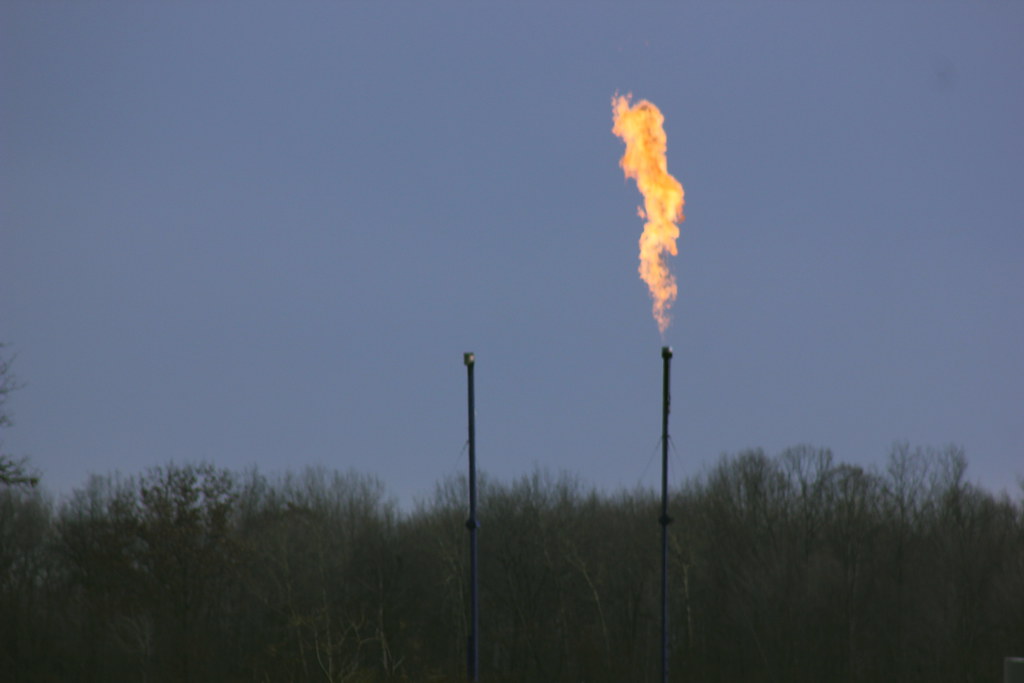Quick summary
- Opponents of fossil fuels like to pretend that they're not opposed to fossil fuels, including natural gas, just "wasteful" practices like flaring. They call for shutting down any oil/gas production that engages in flaring. Such a policy would have terrible consequences.
- What is flaring? Flaring is the practice of burning natural gas, often emerging as part of oil production, that cannot be cost-effectively brought to customers. Flaring that gas prevents it from exploding, protecting workers and communities.
- Why do companies flare gas instead of bringing it to customers? The #1 cause is: lack of infrastructure to bring it to market. And the #1 cause of lack of infrastructure is that anti-fossil fuel activists are gleefully blocking infrastructure development.
- From the US Energy Information Administration: “As crude oil production has outpaced the construction of necessary infrastructure to transport the natural gas extracted during oil production...it has been increasingly vented and flared.” Blame the anti-fossil fuel activists.1
- Here’s what the US Energy Information Administration said about North Dakota in early 2020: “Insufficient natural gas processing capacity and lack of pipeline infrastructure in North Dakota have resulted in lower compliance with the state’s natural gas capture goals since 2018.”2
- Examples of activists increasing flaring: anti-fossil fuel activists have opposed the Permian Highway Pipeline that would reduce flaring by bringing natural gas from Texas oil-and-gas fields to the Gulf Coast.3
- A Bloomberg headline captures the difficulty of building the pipeline infrastructure building that would dramatically reduce flaring: "Grim Day for Pipelines Shows They're Almost Impossible to Build".4
- Another cause of unnecessary flaring is opposition to Liquefied Natural Gas exports. The world market is eager for US natural gas to keep warm and to produce clean electricity. But anti-fossil fuel activists oppose LNG development at every step.
- Despite the pro-flaring actions of the anti-pipeline movement, the US oil and gas industry is highly efficient, losing less than 1% of the energy they produce to flaring. That's 40% less than the global average.5
- If US flaring were totally eliminated it would increase the energy efficiency of drilling by 1%--the difference between a car that gets 30 miles per gallon and a car that gets 30.3 miles per gallon. The idea that we're losing massive amounts of energy is absurd.
- Because the US oil and gas industry loses 40% less energy from flaring than the global average, stopping US production in the name of flaring would increase global flaring.
- Anyone who complains about US flaring but opposes US pipeline-building reveals that their goal is to destroy the use of fossil fuels, not to prevent the wasting of fossil fuels.
- The US does not need new restrictions on flaring, it needs to liberate infrastructure-building from anti-fossil fuel activists so that the highly efficient US oil and gas industry can become even more efficient.
References
-
U.S. Energy Information Administration - Natural gas venting and flaring in North Dakota and Texas increased in 2019↩
-
U.S. Energy Information Administration - North Dakota flared 19% of its natural gas production in 2019↩
-
“Arguing that the U.S. Army Corps of Engineers skirted federal environmental laws when it issued a federal permit to Kinder Morgan, the Sierra Club is asking U.S. District Court Judge Robert Pitman for an injunction to stop ongoing construction on the Permian Highway Pipeline, a 430-mile project to move natural gas from the Permian Basin of West Texas to the Katy Hub near Houston.”
Houston Chronicle“Environmental Benefits: The Project will provide a much-needed outlet for natural gas in the Permian Basin of West Texas. Natural gas is produced as a by-product of the crude oil drilling process in the Permian Basin. Currently, an estimated 400 million cubic feet per day (Mcf/d) of natural gas is flared in the Permian Basin due to a lack of natural gas pipelines that are capable of transporting the gas out of the region to the market. Flaring is projected to increase in the area unless new pipelines are constructed. The PHP Project will reduce flaring and associated CO2 and methane emissions released into the atmosphere by providing 2.1 billion cubic feet per day (Bcf/d) of natural gas takeaway capacity from the Permian.”
Permian Highway Pipeline website↩ -
Bloomberg - Grim Day for Pipelines Shows They’re Almost Impossible to Build↩
-
Based on data from the Texas Railroad Commission, in 2020 (Jan-Oct) 103,786,233 Mcf of natural gas (≈ 107,626 billion Btu) were flared in the state. Oil and condensate production was 1,434,003,914 bbl, natural gas production from oil and gas wells was 8,536,653,563 Mcf for a total of about 17,023,464 billion Btu of energy content.
Texas Railroad Commissions - Monthly Oil & Gas ProductionThe US flared and vented 538,479,000 Mcf compared to 4,470,528,000 bbl of crude and 33,967,557,000 Mcf of natural gas production in 2019. This is about 0.9% of energy lost to venting and flaring from oil & gas wells.
U.S. Energy Information Administration - Natural Gas Gross Withdrawals and ProductionU.S. Energy Information Administration - Crude Oil ProductionGlobally, an estimated 145 billion m3 (5120631500 Mcf) were flared, 34,767,746,500 bbl of oil and about 136 billion Mcf of natural gas were produced in 2018. This is about 1.5% of energy from oil and gas wells lost to flaring.
International Energy Agency - Flaring EmissionsBP Statistical Review of World Energy 2020Note: Mcf = 1,000 cubic feet. Bbl = barrels.
U.S. Energy Information Administration - Energy conversion calculators↩
